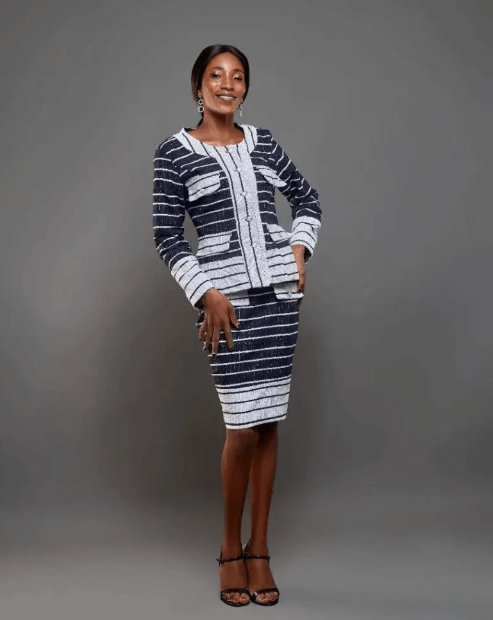Burkina Faso, a landlocked country in West Africa, is renowned for its rich cultural heritage. One of the prominent elements of its cultural identity is the Burkina Faso National Dress, known as Faso Dan Fani. This unique attire carries a deep sense of tradition, symbolism, and craftsmanship. In this article, we will delve into the origins, significance, design, materials, and cultural impact of Faso Dan Fani. Join us on this journey to explore the beauty and story behind Burkina Faso's national dress.
Origins of Burkina Faso National Dress
Faso Dan Fani, which translates to "woven cloth of the homeland," has its roots in the Mossi community, the largest ethnic group in Burkina Faso. The dress originated centuries ago and was traditionally worn by Mossi men and women during important ceremonies and events. Over time, it gained recognition as the national dress, representing the country's cultural heritage and unity.
Significance of the Burkina Faso National Dress
Faso Dan Fani holds immense cultural and symbolic importance in Burkina Faso. It serves as a visual expression of identity, tradition, and patriotism. The attire embodies the spirit of the Burkinabé people and promotes a sense of national pride. Faso Dan Fani is not only a garment but also a symbol of unity, strength, and resilience.
Design and Patterns
The design of Faso Dan Fani is intricate and captivating. The dress typically consists of a rectangular piece of fabric, which is meticulously woven using traditional techniques. Various patterns and motifs are incorporated, each with its own meaning and significance. These patterns often depict elements from nature, such as animals, plants, and geometric shapes, representing the deep connection between the Burkinabé people and their environment.
Materials Used
Traditionally, Faso Dan Fani was woven using locally sourced cotton. However, with modern advancements, the dress is now made using a blend of natural and synthetic fibers to enhance durability and comfort. The choice of materials depends on the weaver's preferences and the occasion for which the dress is intended.
Colors and Symbolism
Colors play a vital role in Faso Dan Fani, carrying symbolic meanings deeply rooted in Burkinabé culture. Each color represents specific values, emotions, or societal aspects. For example, red symbolizes strength and courage, while green represents hope and fertility. The combination of colors in the dress tells a story and reflects the wearer's personality and aspirations.
Cultural and Social Impact of urkina Faso National Dress
Faso Dan Fani goes beyond being a mere garment; it has a profound cultural and social impact in Burkina Faso. It fosters a sense of belonging and cultural continuity among the Burkinabé people. The dress is often worn during festivals, weddings, and other celebratory occasions, serving as a visual spectacle that unites communities and showcases their traditions to the world.
Traditional Manufacturing Process
The creation of Faso Dan Fani is a labor-intensive and skillful process. It involves various stages, from spinning the yarn to dyeing, weaving, and finally, embellishing the fabric. This traditional manufacturing process not only preserves ancient weaving techniques but also provides employment opportunities for artisans, ensuring the continuity of their craft.
Modern Adaptations of Burkina Faso National Dress
While Faso Dan Fani remains deeply rooted in tradition, modern adaptations have emerged over time. Contemporary designers and fashion enthusiasts have embraced the national dress, incorporating it into their collections and infusing it with innovative styles and designs. This fusion of tradition and modernity showcases the versatility and adaptability of Faso Dan Fani in the ever-evolving fashion landscape.
Faso Dan Fani in Contemporary Fashion
In recent years, Faso Dan Fani has gained recognition on the global fashion stage. Its vibrant colors, intricate patterns, and cultural significance have captivated the attention of fashion enthusiasts worldwide. From runway shows to fashion magazines, Faso Dan Fani has become a symbol of African fashion heritage and a source of inspiration for designers around the globe.
Preservation and Promotion
Efforts are being made to preserve and promote Faso Dan Fani as an integral part of Burkina Faso's cultural heritage. Local organizations, artisans, and government initiatives are working together to train younger generations in traditional weaving techniques and raise awareness about the importance of this national dress. By supporting the artisans and showcasing Faso Dan Fani on global platforms, the aim is to ensure its longevity and recognition.
FAQs
1. What does Faso Dan Fani mean?
Faso Dan Fani translates to "woven cloth of the homeland." It is the national dress of Burkina Faso.
2. Who traditionally wears Faso Dan Fani?
Both men and women in Burkina Faso traditionally wear Faso Dan Fani during important ceremonies and events.
3. Are there specific meanings behind the patterns used in Faso Dan Fani?
Yes, the patterns in Faso Dan Fani carry symbolic meanings. They often depict elements from nature and represent cultural values.
4. Can Faso Dan Fani be customized or personalized?
Yes, Faso Dan Fani can be customized to reflect the wearer's preferences and individuality. Artisans often collaborate with customers to create unique designs.
5. Where can Faso Dan Fani be purchased?
Faso Dan Fani can be found in local markets and specialized boutiques in Burkina Faso. Some online platforms also offer authentic Faso Dan Fani garments.
Conclusion
Faso Dan Fani, the national dress of Burkina Faso, is a remarkable embodiment of the country's cultural heritage and unity. Its vibrant colors, intricate designs, and symbolic patterns make it a captivating piece of wearable art. From its traditional origins to its contemporary adaptations, Faso Dan Fani continues to evolve and inspire. By preserving and promoting this national treasure, Burkina Faso celebrates its rich cultural identity and invites the world to appreciate the beauty of its traditional attire.
References
- Arinze, C. (2017). Faso Dan Fani: The Pride of Burkina Faso. Naija Nomads.
- Burkina Faso. (n.d.). African Development Bank Group.
- Burkina Faso: Culture and Traditions. (n.d.). Embassy of Burkina Faso in the United States.
- Fashioning Africa: A Guide to Modern African Fashion. (2011). V&A Publishing.
